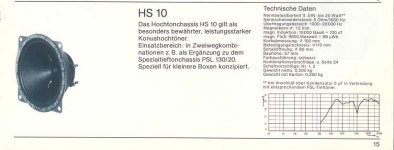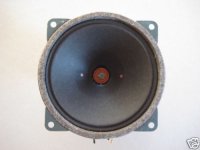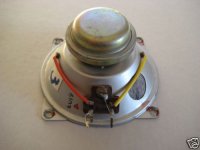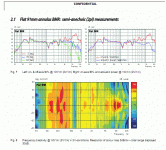Bening Wave Transducer Links
Here are some links to manufacturers, which develop
and produce bending wave transducers of different kinds:
Based on the Walsh bending wave transducer:
http://www.ohmspeakers.com/store_item_detail.cfm?item_ID=38&cart_ID=10251918222
http://www.german-physiks.com/
Flat panel bending wave transducer:
http://www.goebel-highend.de/en/products/detaille.html
Flat bending wave transducer, which operates below coincidence frequency:
http://www.manger-msw.de/index.php?language=en&pid=JEmAWu66RP01l9M51cFnlXCgW0O6DCTm&country=
Successor of the "Linaeum" tweeter (which in fact is a bending wave transducer):
http://membrane.com/impact/products/prodairfoil_wtpaper.html
Here are some links to manufacturers, which develop
and produce bending wave transducers of different kinds:
Based on the Walsh bending wave transducer:
http://www.ohmspeakers.com/store_item_detail.cfm?item_ID=38&cart_ID=10251918222
http://www.german-physiks.com/
Flat panel bending wave transducer:
http://www.goebel-highend.de/en/products/detaille.html
Flat bending wave transducer, which operates below coincidence frequency:
http://www.manger-msw.de/index.php?language=en&pid=JEmAWu66RP01l9M51cFnlXCgW0O6DCTm&country=
Successor of the "Linaeum" tweeter (which in fact is a bending wave transducer):
http://membrane.com/impact/products/prodairfoil_wtpaper.html
Vintage Gear
Some people say, this old Isophon HS 10 Tweeter
worked at least partially as a bending wave transducer.
Since i owned (and disassembled one) in my youth,
i think this is plausible:
The rather large cone was made of thin paper, driven by a small
coil from the apex.
Operation without breackup is fairly impossible.
The notch around 5Khz may be due to coincidence frequency.
Maybe the notch looks different off axis, but i havent got any polar
plots.
The tweeter had a high upper frequency limit and less beaming than
the size would suggest.
Sound was somewhat "nasal" as far as i remember, but also rather
brilliant and detailed.
Some people say, this old Isophon HS 10 Tweeter
worked at least partially as a bending wave transducer.
Since i owned (and disassembled one) in my youth,
i think this is plausible:
The rather large cone was made of thin paper, driven by a small
coil from the apex.
Operation without breackup is fairly impossible.
The notch around 5Khz may be due to coincidence frequency.
Maybe the notch looks different off axis, but i havent got any polar
plots.
The tweeter had a high upper frequency limit and less beaming than
the size would suggest.
Sound was somewhat "nasal" as far as i remember, but also rather
brilliant and detailed.
Attachments
To contribute to this general excursion about bending wave transducers here my listening impressions:
Manger:
Quite high distortion at high levels, impulses very dependent on the amp. Can be quite stunning if the amp can deliver current at high frequencies (even for very powerful amps this is not self-evident).
Balanced Mode Radiator (BMR) from NXT:
Distortion not low, but lower than the Manger. Impulses not as realistic (with Naim electronics).
DDD from German Physics:
Fine dynamics very correct, very neutral. Didn´t hear dynamically challenging music.
Goebel:
Fine dynamics and resolution excellent (at low levels). Not as neutral as the DDD, but quite good. I mean to have heard a sudden "breakdown" of the sound when it reached slightly more than average listening level.
Podium Sound:
Neutral, but very "foggy" on top, similar to paper dual cones (which are bending wave transducers, too, at higher frequencies.
Own experiments:
Rohacell:
Not very neutral, but slightly less foggy than the Podium Sound.
Balsawood:
Neutral and transparent, too many resonances at 50x100 cm.
Manger:
Quite high distortion at high levels, impulses very dependent on the amp. Can be quite stunning if the amp can deliver current at high frequencies (even for very powerful amps this is not self-evident).
Balanced Mode Radiator (BMR) from NXT:
Distortion not low, but lower than the Manger. Impulses not as realistic (with Naim electronics).
DDD from German Physics:
Fine dynamics very correct, very neutral. Didn´t hear dynamically challenging music.
Goebel:
Fine dynamics and resolution excellent (at low levels). Not as neutral as the DDD, but quite good. I mean to have heard a sudden "breakdown" of the sound when it reached slightly more than average listening level.
Podium Sound:
Neutral, but very "foggy" on top, similar to paper dual cones (which are bending wave transducers, too, at higher frequencies.
Own experiments:
Rohacell:
Not very neutral, but slightly less foggy than the Podium Sound.
Balsawood:
Neutral and transparent, too many resonances at 50x100 cm.
Jordan and Bandor metal cones - can they be classified as BMRs? Very good sound but Bandors beams. To my knowledge BMR has flat power response.
I was quite far off axis when I listened to the BMR, no loss of highs.
I have previous (cheaper) BMR and funny thing is if you measure off-axis then you will see typical roll-off but if you integrate all angles then response is flat - this is modal behavior. I don't know how calculate power response (directivity function integral) - measuring software offers only the power average which is fine for room measurements.
Attachments
sorry i couldnt read all the posts but....
I had some of the 3"(?) motorola piezo cone tweeters some time back, and the definition was great but as other have commented im sure, the sound was a little nasal...
That being said the idea of attaching to a non resonant panel to use as midrane-tweeter is intriguing..
has anyone stacked multiple piezos to obtain a larger displacement from these devices and if so what was the result?
I had some of the 3"(?) motorola piezo cone tweeters some time back, and the definition was great but as other have commented im sure, the sound was a little nasal...
That being said the idea of attaching to a non resonant panel to use as midrane-tweeter is intriguing..
has anyone stacked multiple piezos to obtain a larger displacement from these devices and if so what was the result?
Hi,
stacking disc shaped piezoceramic elements, which are polarized
orthogonally through the plane is commonly used to get larger
displacement in technical applications.
But i am not shure whether those piezoelements used in common
tweeters are bending elements ...
If so, i think stacking will not lead to the desired result.
Maybe someone can answer that question ?
I think the main contribution for a lower frequency limit
comes with increase of membrane area, when attaching a
piezo to a larger panel.
Since efficiency increases above coincidence frequency, some
equalization might be necessary.
stacking disc shaped piezoceramic elements, which are polarized
orthogonally through the plane is commonly used to get larger
displacement in technical applications.
But i am not shure whether those piezoelements used in common
tweeters are bending elements ...
If so, i think stacking will not lead to the desired result.
Maybe someone can answer that question ?
I think the main contribution for a lower frequency limit
comes with increase of membrane area, when attaching a
piezo to a larger panel.
Since efficiency increases above coincidence frequency, some
equalization might be necessary.
Hi,
stacking disc shaped piezoceramic elements, which are polarized
orthogonally through the plane is commonly used to get larger
displacement in technical applications.
But i am not shure whether those piezoelements used in common
tweeters are bending elements ...
If so, i think stacking will not lead to the desired result.
Maybe someone can answer that question ?
I think the main contribution for a lower frequency limit
comes with increase of membrane area, when attaching a
piezo to a larger panel.
Since efficiency increases above coincidence frequency, some
equalization might be necessary.
no i believe most 'tweeter' not horn coupled tweeters are bi morphs and as such not bending elements
Early Bending Transducer
"Tonspiegel" Manufacturer: Ibach
http://www.radiomuseum.org/forumdata/upload/Ibach Tonspiegel.pdf
Ibach is a german piano manufacturer.
The device was marketed since 1924.
AFAIK it was patented in 1923.
It is the earliest electroacoustic
bending transducer i found up to now.
In the above article, the reviewer compliments
the sonic quality of the device.
Although, the "Sonic Mirror" did not sell well.
One Reason seemed to be, that it was simply
not loud enough.
"Tonspiegel" Manufacturer: Ibach
http://www.radiomuseum.org/forumdata/upload/Ibach Tonspiegel.pdf
Ibach is a german piano manufacturer.
The device was marketed since 1924.
AFAIK it was patented in 1923.
It is the earliest electroacoustic
bending transducer i found up to now.
In the above article, the reviewer compliments
the sonic quality of the device.
Although, the "Sonic Mirror" did not sell well.
One Reason seemed to be, that it was simply
not loud enough.
At that time the usual "Freischwinger" electromagnetic drive units had very low excursion and drove quite large paper full-cones. Probably worked in bending-mode over the larger part of the spectrum.
I agree totally. In those early days there seems to be
little distinction between "piston acting" and "modal
acting" devices.
But the "Tonspiegel" , "Sound Mirror" used a flexurally
rigid flat membrane which was made of wood.
Since the device is excited from the center,
the f-holes may also contribute to a more
asymetric shape and a more even distribution
of modes over the frequency range.
Who knows ? One has to build one and make some
measurements. But i am convinced, that the holes
are not needed for the device to work as a
transducer.
the f-holes may also contribute to a more
asymetric shape and a more even distribution
of modes over the frequency range.
Who knows ? One has to build one and make some
measurements. But i am convinced, that the holes
are not needed for the device to work as a
transducer.
... more than 60 years before the
base patent used by NXT.
Should we think the patent is "ungültig" ?
POL
Helmholtz resonance? do you think the devices also has some kind of load like a BR?
I am not an instrument maker, but AFAIK every violin has
a range of resonance, where the enclosed air is involved.
IMO there must be helmholtz resonance, when you have
a ported enclosed volume. But we have to keep in mind,
that the membrane/cabinet does not necessarily move
in phase as a hole body.
So i would not call it "BR" in the sense we use the
term today, where a pistonic acting woofer is used.
Maybe someone should copy the device and analyse it ?
Should we think the patent is "ungültig" ?
POL
No.
We have to keep in mind, that NXT has done a lot of research and
development in the field of DML. The researchers published many
articles which contribute to the understanding of the DML
principle and they developed many special offspins of DML.
AFAIK the base Patent by Dr. Ken Heron comprised a honeycomb core
material, which was at that time evaluated for application in
an aircraft.
The ability to radiate sound well, was unwanted for the application
in an aircraft. But it was found, that the material could be used
to make a bending wave loudspeaker.
Such material was unavailable in 1923 AFAIK. The "Tonspiegel" device
seems to have its roots in the traditional making of a musical
instrument.
In fact the soundboards and bodies of pianos and violins can be seen
as a kind of bending wave transducer.
In my eyes, the new basic idea was the application of an electromechanical
exciter - driven by a music signal - on a flexurally rigid soundboard or body,
which makes up a new kind of loudspeaker.
This kind of loudspeaker evolved "naturally" from musical instruments,
similar like cars developed from coaches.
A device based on that principle is patented more than 60 years
before the patent by Dr. Heron, which uses the same effect nowadays, but
is based on recently available materials, that is all i want to say.
I do not want to evaluate the validity of any patents for i am not
skilled to do that and i have no interest in doing that.
- Status
- This old topic is closed. If you want to reopen this topic, contact a moderator using the "Report Post" button.
- Home
- Loudspeakers
- Planars & Exotics
- PIEZO NXT type panel



